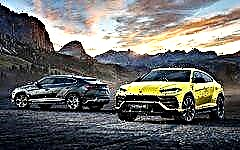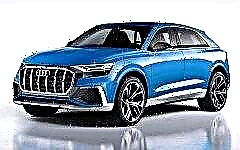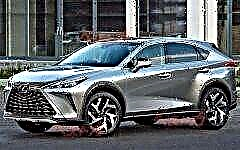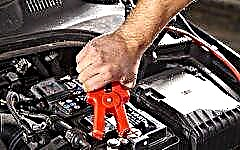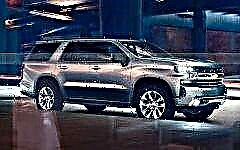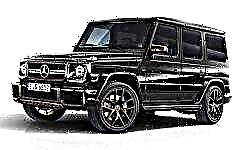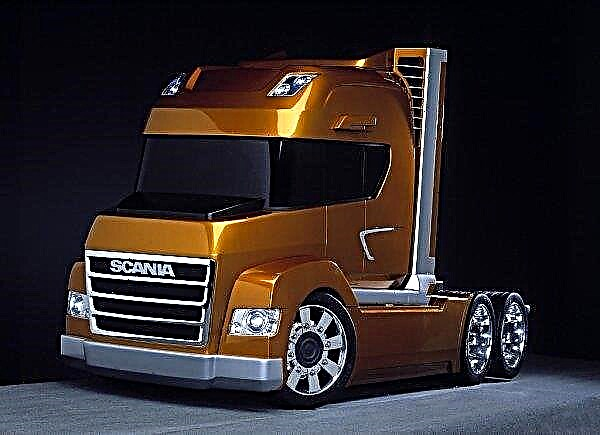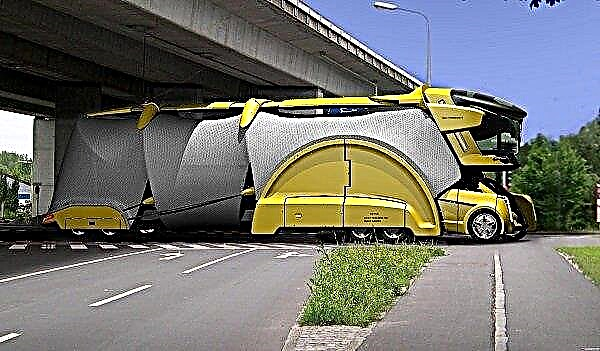
The content of the article:
- Rating of futuristic trucks
- Nikola One
- Iveco Z Truck
- Freightliner Inspiration Truck
- Walmart Advanced Truck
- Iveco Vision
- Mercedes-Benz Future Truck 2025
- Toyota Privus
- Chameleon
- Mitsubishi Fuso Canter Eco-D
- Scania truck
Technological development in the automotive industry has reached unprecedented heights, and it seems that it is not going to stop. Cars are getting faster, more economical, advanced construction materials are being used, and entire transport concepts are being developed. This fully applies to trucks. Let's take a closer look at this direction, to which undeservedly little attention is paid, and highlight the ten most interesting cars.
Rating of futuristic trucks
10th place. Nikola One
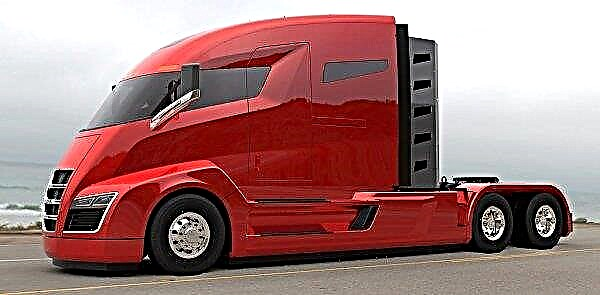
Nikola Motor Company, a young but ambitious US company, presented its vision of what a modern truck should become. The developers did not limit themselves to half measures and transferred the model to electric traction, which at the current level of development of such technologies is a very bold step, since the cost of combining a gas turbine engine, a generator and an electric motor casts doubt on the economic feasibility of such savings on fuel.
The power reserve of the novelty reaches 2000 km, and the power of the power plant in the traditional equivalent is 2000 hp. A fully laden car is capable of accelerating to 100 km / h in just 30 seconds, which recently was a good indicator for mass passenger cars. This combination of indicators indicates that the developers sought to demonstrate the limit of technological capabilities, rather than present a production model. Against this background, the elaboration of the shape of a bonnetless cab in order to achieve a low drag coefficient seems to be something commonplace.
9th place. Iveco Z Truck

According to the automaker, this is the truck of the future, allowing today to reduce operating costs by a third. The power plant in the form of an internal combustion engine running on biomethane has an output of 460 hp, and the mileage at one gas station reaches 2200 km.
The vehicle is equipped with a recuperation system, thanks to which the heat from the exhaust gases is used to generate additional electricity. Special tires with reduced rolling resistance also contribute to fuel economy.
Information about the operating parameters of all systems is displayed using a projector on the windshield, and the active introduction of driver assistance functions into the on-board computer greatly facilitates the driving process.
The layout of the cabin has also been seriously worked out, which, in addition to the maximum possible aerodynamics for today (for a hoodless layout), has a transformable interior space, which allows increasing the volume of the household module in the parking lot due to the rear wall sliding back by 0.5 m.
8th place. Freightliner Inspiration Truck
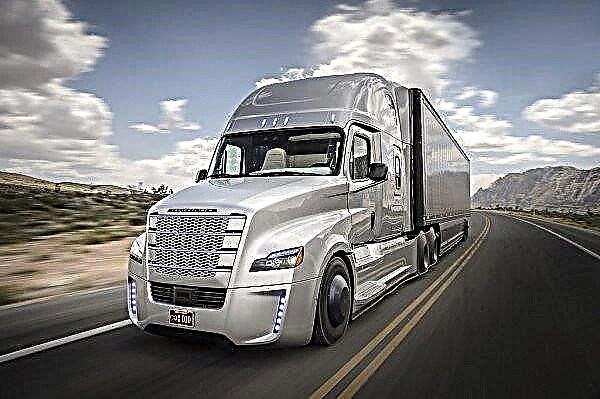
The development of the concept of autonomous trucks is carried out by many automakers, including in America. At first glance, the Inspiration Truck, presented to the public back in 2015, looks like a modern, but not advanced car, made according to the classic design canons, but the on-board electronics, capable of carrying out transportation without the help of a driver, forces us to reconsider this opinion. Due to the fact that the transport infrastructure, as well as the autonomous control systems themselves, still require improvement, the manufacturer positions the Highway Pilot (the autopilot of this model) as an assistant to the driver, and not a replacement. The system is able to recognize road signs, markings, and also analyze the speed and maneuvers of other road users.
A distinctive feature of the autopilot is the absence of overtaking and lane change functions, so the driver's participation is still necessary, but this is more of a safety net, an artificially imposed restriction than an imperfection of the computer system.
The power plant is traditional - an engine, or rather a wide range of internal combustion engines, wheel arrangement 6x4, bonnet layout.
7th place. Walmart Advanced Truck

A noteworthy fact is that this truck was developed not by a leading automaker or tuning studio, but by the Walmart trading company, which tried to implement in it all the requirements dictated by the modern realities of real operation. First of all, special attention was paid to economy, due to which the truck cab is streamlined, with a protruding lower part.
It is worth noting that the interior space in the driver's workplace is quite narrow, which is why his seat is located in the center of the cab. This improves visibility, and the lack of space is compensated for by a huge household module behind the driver's back.
We also worked out the design of the semi-trailer, many of the parts of which are made of carbon fiber, which made it possible to reduce the weight by two tons compared to traditional models.
The truck received a multi-fuel engine capable of fully operating on diesel, natural gas and modern biodiesel. In addition, there is a rechargeable battery that provides up to 100 km of run.
6th place. Iveco Vision

Developments in the field of light commercial vehicles look no less interesting. Electronic systems Iveco Vision allow you to scan the cargo and give tips on its optimal placement, which significantly increases the efficiency of transportation. To achieve maximum efficiency and reduce emissions, the power plant is able to recognize the driving mode and function accordingly: on the highway as a conventional hybrid engine, and in the city using purely electric traction. According to the manufacturer, carbon dioxide emissions are reduced by 25% compared to the traditional scheme.
Serious work has been done with the bodywork as well. The fact is that for a light van, the main field of activity of which is urban transportation, good visibility is necessary. In view of this, the engineers had to develop a complex openwork design of the front struts, which made it possible to maintain the high rigidity of the cab.
5th place. Mercedes-Benz Future Truck 2025
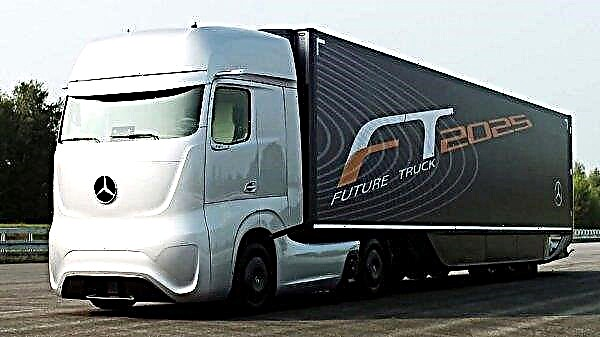
In constructive terms or design, this model from the German auto giant is not very impressive, but the electronic filling, which allows you to do without the help of a driver on almost the entire length of the route, is really a new stage in the development of freight transportation.
The truck cab also deserves a special mention - it is decorated in a style that is as close as possible to the living room, and this applies not only to the size and equipment with household appliances. The floor in it is made of a wooden covering, similar to parquet, and the passenger seat is completely realized in the form of an armchair in the corner.
The numbers in the model name do not at all indicate the year when the model will be brought to production, they show the projected date when the road infrastructure will be able to accept this advanced development.
4th place. Toyota Privus
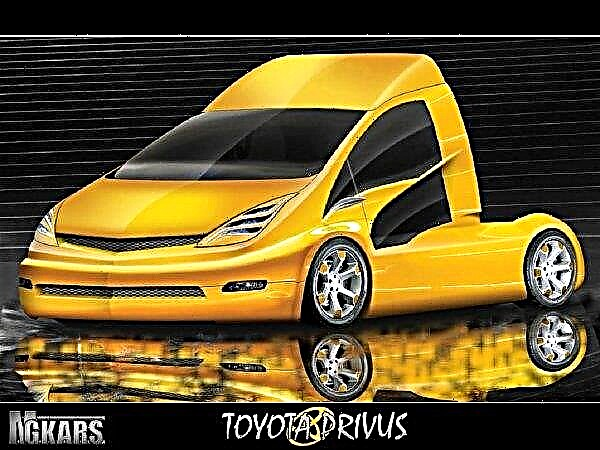
The developers of this truck put at the forefront the achievement of the maximum possible aerodynamic streamlining, which is why, with the classic bonnet layout, the angle of inclination of the windshield practically coincides with the line of the bonnet. The only negative aspect in this solution is the increase in the overall length of the road train, which impairs its maneuverability and limits the useful length of the semitrailer.
Solar panels are actively used in the car, which makes it possible to provide power supply not only to auxiliary equipment, but also to the main systems.
The decision to use alternative energy sources literally hung in the air, since it was simply wasteful not to use the huge areas of trucks. Inverter systems are actively used in on-board electronics, which make it possible to obtain both direct and alternating current to power the necessary devices.
To facilitate the loading / unloading process, the roof of the cargo compartment is foldable with the help of servo drives.
3rd place. Chameleon
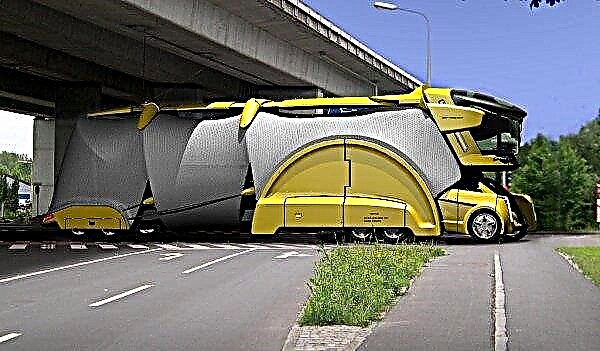
This purely concept truck is the embodiment of the transport companies' dream of creating a versatile vehicle with variable capacity. Chameleon, by simple manipulations with the switches on the instrument panel, is able to change the size of the cargo compartment in a couple of tens of seconds. This is achieved thanks to the modular-sectional design made of an elastic and durable tarpaulin on a metal frame, which allows not only to change the geometric parameters, but also provides reliable fixation of the load, as well as effective energy absorption upon impact.
The loading mechanism is also implemented in a rather original way. According to the developers, the idea was prompted by nature itself, in particular - a python that swallows prey, but something similar has long been used in the creation of cargo aircraft.
Before loading, the cabin with the help of a special mechanism tilts upward, which opens access to the cargo compartment, then special guides equipped with a conveyor belt are pulled out of it, thanks to which the container is loaded independently.
If you look at the car in profile, then a hemispherical element stands out in its central part, which bends around the cargo segments with partial filling and the need to reduce the dimensions of the vehicle.
2nd place. Mitsubishi Fuso Canter Eco-D
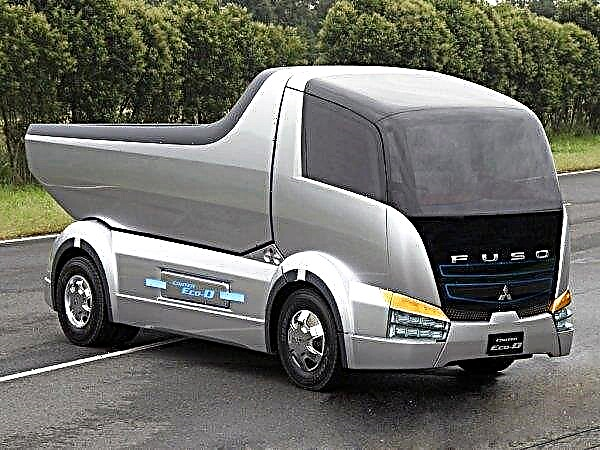
This advanced truck was presented to the general public in a dump truck version, which features a streamlined cab, devoid of front pillars, with a huge glass area.
Carbon is actively used as materials, which can significantly reduce the vehicle's own weight. The cab is made of composite material, which allows not only to reduce weight, but also to provide high levels of spatial rigidity.
The power plant is combined: a diesel engine that generates electricity for the electric motor. Rather, the characteristics of the described units are striking. So, the power of a diesel engine with a volume of 3 liters. is 125 hp, and the electric motor is 35 kW. How the sufficient carrying capacity is achieved in this case, the developers do not specify.
If we consider the installation in more detail, then a rather capacious lithium-ion battery will appear, which, obviously, will accumulate excess energy when driving with low loads and give them away if necessary.
The practical implementation of such an idea looks very doubtful, since the transportation of goods over long distances can lead to a complete discharge of the battery and an insufficient thrust-to-weight ratio of the car. Even taking into account the carrying capacity of 3 tons, the actual operation raises great concerns.
1st place. Scania truck
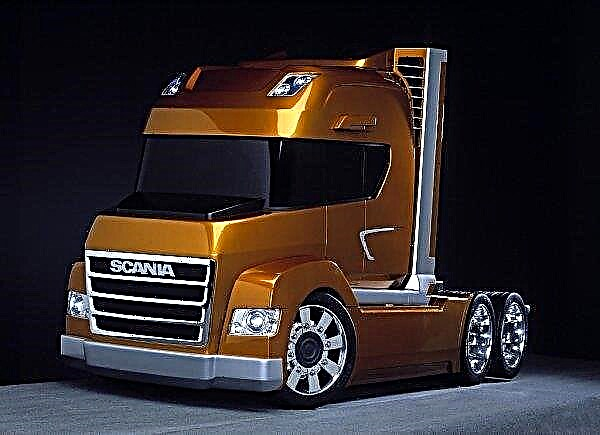
This concept truck, both in terms of the aggregate part and in appearance, is as close as possible to the serial samples. The fact is that the engineers thought not only about the futuristic design, good (for a truck, of course) aerodynamics and the use of modern materials.
The chassis was also carefully worked out. So, a diesel-electric installation is used as a motor, and there is no direct connection between the internal combustion engine and the wheels. The diesel is connected to a generator that generates electricity for the electric motor that powers the truck. Such a constructive solution has been widely known for decades and was implemented even in the Soviet BelAZ with its motor-wheels. The diesel-electric installation allows you to achieve amazing efficiency at low loads, but as they increase, fuel consumption becomes more than significant. According to the assurances of the designers, they managed to cope with this problem, as well as to reduce the amount of harmful emissions to a minimum.
Thus, modern developments are aimed not only at increasing the efficiency of existing models, but also at changing the very concept of "truck", in fact, the implementation of the above concepts will change the very organization of cargo transportation, as well as fully automate this process.

